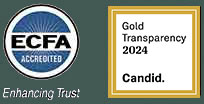I love the pattern of God’s leadership development laid out in Psalm 78:70-72: “He chose David his servant and took him from the sheepfolds; from following the nursing ewes he brought him to shepherd Jacob his people, Israel his inheritance. With upright heart he shepherded them and guided them with his skillful hand.”
Leaders who have been faithful with a little (in David’s case, sheep) are then entrusted with more. Leadership development should—at the end of the day—create “upright hearts” and “skillful hands”.
The Demands of Organizational Leadership
A great leadership coach in my life once walked me through different seasons and phases of leadership, he captured them this way: leading yourself, leading followers, leading organization, and leading leaders. At that time, I was stuck in my leadership and could not see or grasp the difference in leading followers (such as a small group or a ministry team that I directly led) and leading organizations.
I quickly learned that two of the demands of organizational leadership were (1) the ability to create systems and lead through systems and (2) the creation of systems that developed other leaders.
“If a leader cannot create and develop other leaders he will quickly find himself overwhelmed, burned out & severely limited…”
In my experience, leaders are most often recognized and refined rather than created from scratch. My antennas are always up and scanning for those who display extraordinary heart, passion, zeal, spirit, or skill in their gifting. These raw ingredients are crucial, but so are reproducible systems to develop them and their leadership.
Creating pathways for leaders to grow and develop will greatly benefit both the emerging leader along with your organization and ultimately the Kingdom of God.
Leadership Systems Check-List
Your leadership development systems must include:
1. Declared Intentions:
The leader must clearly communicate to the emerging leaders what the expectations are as they engage the process. This must include both the expectations for the leadership development process and what you are promising and not promising them upon completion of the process.
2. A Big Picture of the Process:
Much like discipleship, leadership is both caught and taught. Let the emerging leaders know what they can expect. Ours includes an investment in self-awareness, a reading list, desired experiences for the emerging leader, and regular meetings for growth and encouragement. You must also be clear about start dates, end dates, and the bailout points along the way. (These bailout points for both parties—should either feel it is no longer redemptive for the relationship between the participant and the leadership development process to continue.)
3. Consistent Meetings:
Create a schedule of the regular meetings times and a syllabus to go with it. Meet regularly to hear from those in the process, discuss real time issues with them, discuss books and articles together, and create reproducible and reusable leadership lessons that transfer to them who you are calling them to be and what you are challenging them to do.
4. Teachable Moments:
Be on the lookout, constantly, for two things: (1) them doing things well and (2) them not doing things well. Both of these are golden, teachable moments. Step into those moments with grace and truth and create a culture where the capturing of teachable moments are normative.
5. Shared Learnings:
Make it a regular practice to pass along to them the emails, blogs, articles, podcasts, books, and interactions with other leaders that you personally find helpful. Do not be stingy with what you are learning. Expose them to and marinate them in the leadership ideas you most want them to own and emulate.
6. Take Them With You:
There simply is no substitute for truth transferred in the context of relationship. Therefore, your leadership development program must allow for unscheduled, along the way, time together. As you go, as you travel, as you make decisions, as you deal with real leadership issues—whenever appropriate, take them with you. Let them watch you lead; do not just tell them how to lead.
Leadership Abilities: Part 2 coming soon…











